Josh Poole: The Future of Cold Weather Roofing - PODCAST TRANSCRIPT
November 2, 2023 at 12:00 p.m.Editor's note: The following is the transcript of a live interview with Josh Poole from Tremco Roofing Division. You can read the transcript below or listen to the podcast.
Intro: Welcome to Roofing Road Trips with Heidi. Explore the roofing industry through the eyes of a long-term professional within the trade. Listen for insights, interviews and exciting news in the roofing industry today.
Heidi Ellsworth: Hello and welcome to another Roofing Road Trips from RoofersCoffeeShop. My name is Heidi Ellsworth and we are here today to talk about getting ready for winter, the future of cold weather roofing. I have to tell you there are some amazing solutions out there and we have asked Josh Poole of Tremco to come talk to us about their most recent product launch of AlphaGuard FC LO. It's what everyone's going to need for the winter roofing installation. So Josh, welcome to the podcast.
Josh Poole: Yeah, thanks for having me, Heidi. Always a pleasure.
Heidi Ellsworth: Ah, I love it. I love hearing about this. You guys always have such great innovations and real problem solvers for the industry. So before we jump into that, why don't you go ahead and introduce yourself and tell everybody a little bit about Tremco.
Josh Poole: Yeah, my name is Josh Poole. I am a liquid applied product manager for Tremco Roofing Division. I've been with the company for just under 18 years and a predominant amount of that time I've been dealing with liquid applied products. I'm a RCMA member, which is the Roof Coating Manufacturers Association. I sit on the board of that organization as well. Tremco has been in the marketplace since the late 1920s, started as a roofing based company, basically doing what we do again today. So we've kind of had a renaissance and going back to our roots as far as restoring roofs, maintaining them using liquid applied products. Since then, obviously the company's grown. We've added commercial sealants and waterproofing division. We have a technical branch as well, and we do a lot of roofing work, a lot of waterproofing work across the US, Canada, North America and the Caribbean.
Heidi Ellsworth: Yeah, I mean, you are everywhere, and your products are really solving problems for all those different locations, including the winter cold. So let's talk a little bit about AlphaGuard FC LO. Can you tell us about it?
Josh Poole: Yeah, we're very excited about this product. It is our newest addition to our AlphaGuard line, which is a premium liquid applied roofing system line that we have in place. This product is a modified polyurethane methacrylate liquid applied system. For short we like to shorten that up and call it a PUMA based technology. So it's a methacrylate that's modified with a polyurethane chain or polymer. That combination gives you a little bit extra performance characteristics, which we'll get into a little bit later. The FC LO comes from fast cure, low odor, and again, we'll talk about those two key features to the product I think a little bit later here.
It is a two component product. It has a powder callous that gets added to the liquid resins. We offer those liquid resins in three grades. We have a field which is applied to obviously the field of the roof. We have a flashing grade, which is used for vertical applications on flashings, whether it be walls, pipe flashings, drains, any kind of penetration through the roof. And then we have a mastered grade as well that could be used as a detail material or it could be used as a patch and repair type product. The product itself comes in one color. Right now it's white, but we do have some more color options that we're working on getting into the market here in the near future.
Heidi Ellsworth: Wow, very cool. Okay, so we've heard a lot about PUMA and PUMA products. How is the FC LO the kind of the next generation of PUMA?
Josh Poole: Yeah, so I think the key aspect here or addition is really the low odors. So traditionally if you've worked with PMMA products or PUMA based products, they're going to come with a distinct odor and that's just inherent to the product itself. So this product offers a low odor option that's truly somewhat unique to that type of technology. I'd liken that odor to more of an exterior latex acrylic paint or something along those lines, which again is a drastic departure from the odor that you get with these products traditionally. So I think that's a key feature that sets it apart from some of the other similar based products or technologies that are in the market.
Along with that, we did make some additional enhancements to the product from a chemistry standpoint to try to boost certain product performance characteristics in the way of elongation, strengthen durability. Properties are traditionally going to go hand in hand with these type of products as well as resistant to certain types of chemicals. So those are kind of the key attributes that we're continuing to carry out and then also somewhat seeing an enhancement in those features as well with this new product.
Heidi Ellsworth: Yeah, it's really interesting. So when you start putting... I love how you enhanced chemistry and everything that you've been doing to really take this so that it has low odor but faster. Let's talk a little bit about those installation benefits overall.
Josh Poole: Yeah, so there's definitely a number of them when it comes to this product. I think the first one that we like to touch on is the low odor. So this is going to offer an ideal type of product or system that can be installed, especially with sensitive accounts. There's certain facilities and market segments like healthcare occupied facilities that are running 24/7 that you just can't clear out the building and allow for an installation at times. So this kind of goes hand in hand with those situations where we offer something that's not going to disrupt the activities and what is happening at those facilities.
The other benefit is going to be the rapid cure. So that fast cure it is a two component products, so it's a very reliable curing mechanism versus single component products. And it also comes along with that benefit that you'll see with any type of PMMA or PUMA based product where you're left with a waterproofing layer in as little as 30 minutes. So it's going to get the roof installation completed and performing in less than an hour generally.
Some other installation benefits are the cold weather application that comes along with this. So with the FC LO product, we have a standard grade or summer grade if you will, where we're able to install this product at temperatures between 50 degrees Fahrenheit to 95 degrees Fahrenheit, but we also have a winter grade option that can get you into applications that take place at below freezing temperatures, and that spans all the way up to temperatures in the 60 degree Fahrenheit range as well. So you have a wide span of application temperatures that you can install this in. It allows for options where if you have an emergency leak call or patching repair that you just have to get done, and you're in situations where you're facing at freezing or below freezing temperatures, you have an option to go up and get an installation in place.
Sorry, I was just going to say the last installation benefit I would have to say is that this product or this grouping of products are all designed for standalone applications. So what that means is that they've been developed to be UB and weather stable. Those products then can go down without the need for multiple coats. So traditionally with a liquid applied system, more times than not you have a base coat and a top coat application. These products are able to be applied in one application with a reinforcement embedded in between, and that is your finished system. So it simplifies the amount of products that you have. You don't have base coat and top coat options, and then potentially separate catalyst for A and B. If you're dealing with two component products, it really simplifies the products that you would have on site and also reduces labor steps.
Heidi Ellsworth: That's excellent. So do you need to use base and top coat or is it just one coat? I want to be sure of that.
Josh Poole: Yeah, yeah, absolutely. So yes, that is correct. This product can be applied in a single coat application. That single coat does incorporate a reinforcement at this time. But yeah, there is no need for a base and top coat application. I kind of touched on traditional systems. You typically would have that type of a combo where you'd install a base coat. You typically would need to allow that base coat to cure over the course of a day, and then the next day you're installing your top coat. Obviously the benefit there is that you're able to install this product and system in a single day with waterproofing occurring as little as 30 minutes, so a huge benefit there.
Heidi Ellsworth: Yeah, I mean when you look at that and you think about the benefits or let's just start with, and there's so many, but let's start with labor savings. I mean, you don't have to do two coats, you can do it quickly no matter what the temperature. Just talk a little bit about that overall, the benefits for labor with this new product.
Josh Poole: Yeah, I think the obvious one is that first one we touched on, the lack of needing to come back for a topcoat. You're going to reduce labor steps and that's also going to help contractors and installers. Typically, the next day it's not quite as easy as getting on the roof and just starting to apply topcoat over that base coat you usually have due. You may have pollen or debris or things that have accumulated on the roof surface that you may need to blow off and clean. So this really not only helps from eliminating that topcoat step, but also some of those additional tasks that come along with carrying that out as well.
The fast cure also allows contractors or installers to reduce the amount of down days that they have. So when you have chance of rain in the forecast, it depends. Some contractors may set the bar at 30% chance of rain, 40% chance of rain. Really you're losing those days with some of the other liquid applied systems that are out there. With this one, obviously with the rapid cure, it kind of opens that up where you can check radar and forecast and really determine if you have a 30% chance or 40% chance, but it's not due until the afternoon. You may be able to get a good portion of your workday in ahead of that, just ensuring that product's cured and waterproof prior to the weather coming in. So that definitely helps from a contractor's perspective as well. And then also, again, simplifying that job site inventory where you're loading less products onto the roof and handling less products, I think there's a definite benefit there on the labor side
Heidi Ellsworth: Yeah. That makes total sense. And of course labor savings equates into savings and benefits for the end user or the facility manager, the building owner, whoever it may be. Let's talk a little bit about what are the benefits to those end users. Obviously labor savings, but there's a lot of benefits. Can you go through some of those for us?
Josh Poole: Yeah, absolutely. So I think the first and foremost is you should see a reduced labor number for the installation of the product. You're also getting to a fast and effective install there as well. So like you said, less down days should allow the contractors a little bit more leeway to get out and complete these jobs in a little quicker fashion. And then they're also getting that peace of mind that once this product's installed, you're going to have effective waterproofing in less than an hour, which is I'm sure it can be a huge relief to an end user or building facility owner.
The low odor aspect of it is going to reduce disruption to the daily activities. And on top of that, when you're looking at roof restoration applications, you're also going to see less risk for disruption to those activities as well. There's less tear off that may be needed, if any at all, less equipment that's being loaded to the roof and brought in and generally less of a footprint of what you need on the ground level to chew up space at a location as well. So you have that added reduction of disruption to the facility there.
I think just a couple of additional benefits that come hand in hand with a restoration application is that you're maintaining their existing roof and maximizing their investment into that original roof system. You're adding waterproofing to that design, further strengthening it, and also allowing for added performance with that. And it all comes with a seamless design with these liquid products, which seams and transitions are generally going to be the common culprit as far as root cause for roof leaks and issues on roofs and that's all being taken out of the equation with this. So the end user gets a very high performing system, especially with this PUMA based technology and it generally comes at a cost that's less than the price of roof replacement. So all good things when it comes to building owners and facility managers.
Heidi Ellsworth: When I really think about that disruption factor too, Josh, I think that's so important because whether it's a hospital, a school, commercial building, apartments, really the facility managers or the building owners, they just want to make sure that it gets done quickly and well, so that there is, like you said, low disruption. Are you getting any feedback from some of your customers and some of your end users out there and some of their thoughts or is it still relatively new?
Josh Poole: No, I think we do get that feedback at times, and we've also run into situations where the facility just can't afford to open up the roof in certain areas, whether or not it's over an operating room or very sensitive areas of certain types of facilities that need roofs done and need to have an effective option there. So it's certainly something that does come up and get discussed relatively often, to be honest. So I think like you said, end users just they want those things. They want to get the roof completed quickly, they want it done and they want it done to where it's not going to affect anything that's going on underneath while it's happening. So this is a great option for just doing that.
Heidi Ellsworth: Let's talk a little bit about sustainability and durability because that is also something we're hearing from end users a lot from the customers. They want things that are durable, they want things that are sustainable. Talk a little bit about what you're seeing in terms of sustainability and durability.
Josh Poole: Yeah, so from the durability standpoint, the PMMA and PUMA based products are kind of known for that, especially the PMMA products where they have a little bit less elongation and flexibility versus PUMA based products, but they still carry that high performance. When it comes to strength and durability, those types of products get used on roofs as well as many times outside of that for waterproofing applications, infrastructure applications where you need a highly durable type system to sustain traffic and different loads. So type of products really lend themselves to that specific type of feature where they're highly durable, they last for a considerable amount of time. And on the sustainability piece of that, that's where we can combine that durability of the product and chemistry and we could roll in all the sustainable features that come along with these liquid applied products, especially in roof restoration applications.
So we essentially were able to reduce landfill, talked about it earlier, where you're leaving that roof in place to the best of your ability and reducing the amount of areas where you may have to cut out and do wet replacement. That would really be about the max of what is being taken off that roof and taken to landfill. So on average, you're going to... Just our company alone, we're saving thousands and thousands of tons of landfill from going to those sites each and every year. Highly reflective surfaces are going to help reduce energy usage as well, especially as the further south you go, you're able to offset the cooling cost during the summer by utilizing those reflective coatings.
And there's also been studies done that even in northern climates, excuse me, you still see a reduction in energy usage that can offset the heat penalty that you incur over the course of the winter months as well. And then the biggest feature to these types of products or the ability to go up and recoat at the end of its service life and further extend the performance and lifecycle of that original roof as well as the liquid applied system that was installed underneath. So your perpetually pushing out the need to tear off and replace that roof and send it to landfill by utilizing those options moving forward, and that also helps the end user reduce the amount of annual cost and total lifecycle cost of their roofing at their facility.
Heidi Ellsworth: And I really kind of think about too as how important a service and maintenance program is, right? Because when you talk about sustainability and longevity, I know at WTI and Tremco, that kind of service and maintenance using these kinds of products is just critical and it really extends the life of the product way beyond what people expect.
Josh Poole: Yeah, absolutely. Definitely anytime you have anything, and I always make the analogy of if you buy a new car and you never take it in for maintenance or service, you never get the oil change, what are your expectations for how long that car is going to perform, right? And how long you're going to have it as serviceable for you. So as with anything, a good maintenance program is going to keep things performing as they should, and we will lengthen the life cycle of anything, and that includes these roofing options as well.
We're fortunate enough to have an entire technical branch with WTI that are staffed with highly skilled professionals that can go out and carry out this service for our customer base as well. But really the use of a maintenance program is something that is generally required by most manufacturers no matter what roofing system you're installing as part of the warranty and the owner's obligations, but is really just best practice for extending and maximizing the life of any roof that you're installing and being able to match that with some of these liquid applied benefits and the recoat options really makes a lot of sense.
Heidi Ellsworth: Yeah, and you can do it anytime of the year.
Josh Poole: Absolutely. Yeah, that's where we're trying to extend that opportunity for installation and keep contractors crews out and doing work on job sites and on roofs. So the more that we can do that and the more options we can have to carry out these types of roof installations, no matter what time of year it is, the better off I think everyone will be.
Heidi Ellsworth: Yeah, yeah, it makes so much sense. So whether contractors or architects or building owners are listening to this, let's start out with roofing contractors. How can they get more information about FC LO?
Josh Poole: Yeah, so I think all that, we'll start by visiting our website, www.tremcoroofing.com. From there, we have a couple of options for you. We do have an area of the website where you can find your local sales representative. They're always a great resource, so by clicking on... You can track that down by state and region through there and getting in contact with Tremco Roofing sales rep. And we also have a feature on our website where you can ask the experts. So, if you're requesting information or you have a specific question, you can go ahead and fill out that form, send it in and then we'll be in contact with you to answer any questions you might have or get you the information that you're looking for.
Heidi Ellsworth: Yeah, that's excellent. Great information, Josh. I do want to let everyone know Tremco and WTI both have full directories on RoofersCoffeeShop and on CoatingsCoffeeShop where you can get all of this information. So Josh, congratulations on a great launch and a great new product.
Josh Poole: Thanks, Heidi. I appreciate it. And thank you very much for having me on.
Heidi Ellsworth: Ah, we love it. It's so great. I love hearing about these new products and you're always pushing the envelope. Pun intended, right? Building envelope. There we go.
Josh Poole: That's right. Pushing the building envelope. Yeah.
Heidi Ellsworth: Yes.
Josh Poole: And I'll look forward to the next call. Like you said, we're continuously working and we always have the next thing lined up, and so I'll hopefully be talking with you again here soon.
Heidi Ellsworth: I'm looking forward to it. That is great. Well, thank you so much and thank you all for listening to this podcast. This is the kind of information we want to keep bringing you so that you can find out the new technologies, how these innovations are making a difference to you and your crews on the rooftop. Like I said, you can find all this information in the Tremco and or WTI directories on RoofersCoffeeShop and CoatingsCoffeeShop. Please also listen to all of our podcasts under the navigation RLW. You can find it under podcasts with Roofing Road Trips. Or on your favorite podcast channel, be sure to subscribe and set those notifications so you don't miss a single episode. And we'll be seeing you next time on Roofing Road Trips.
Outro: Make sure to subscribe to our channel and leave a review. Thanks for listening. This has been Roofing Road Trips with Heidi from the rooferscoffeeshop.com.

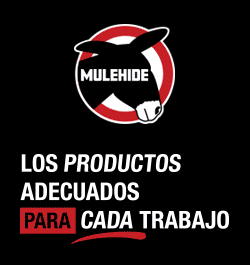











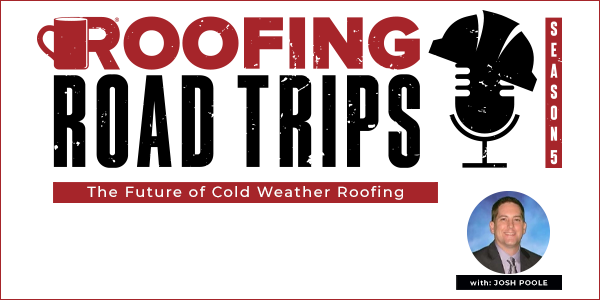

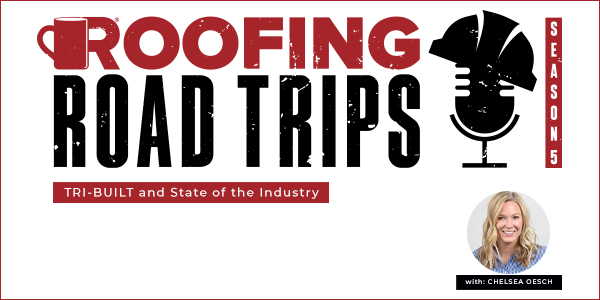





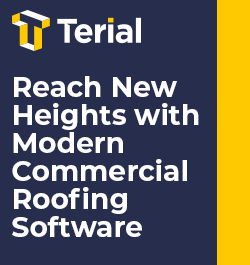
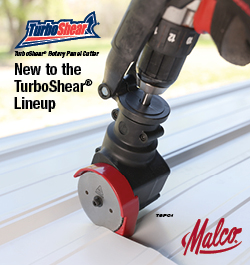
Comments
Leave a Reply
Have an account? Login to leave a comment!
Sign In